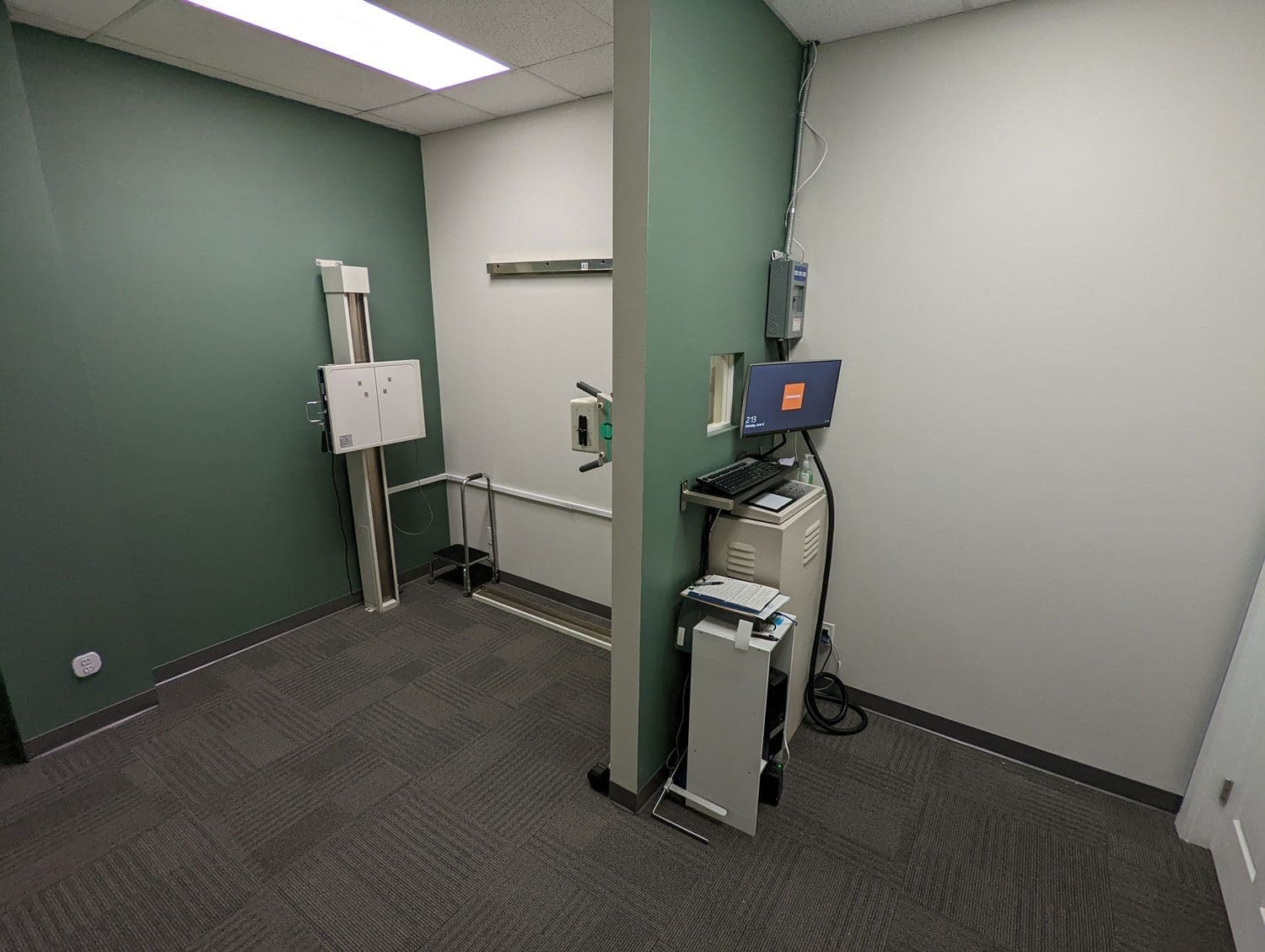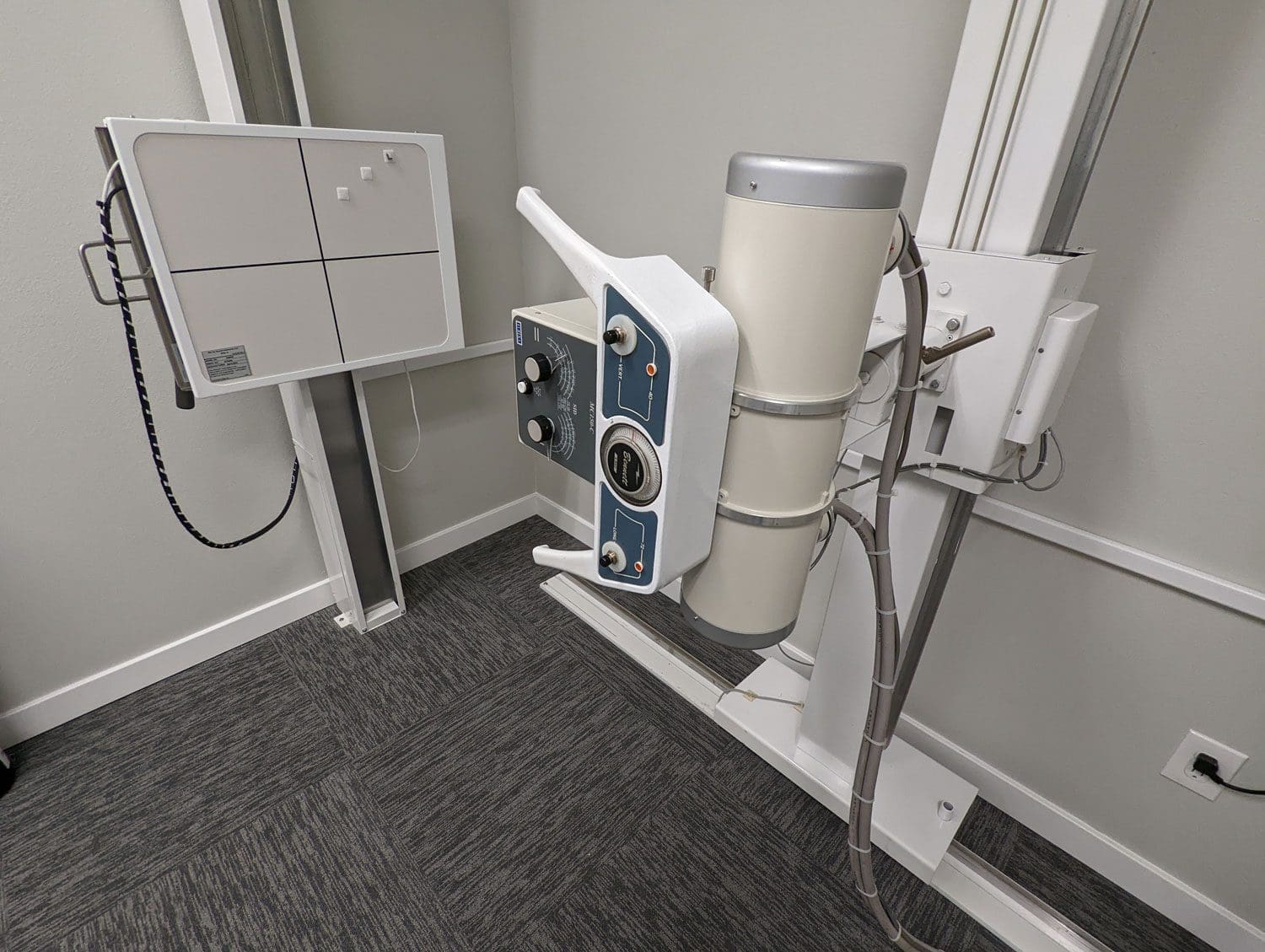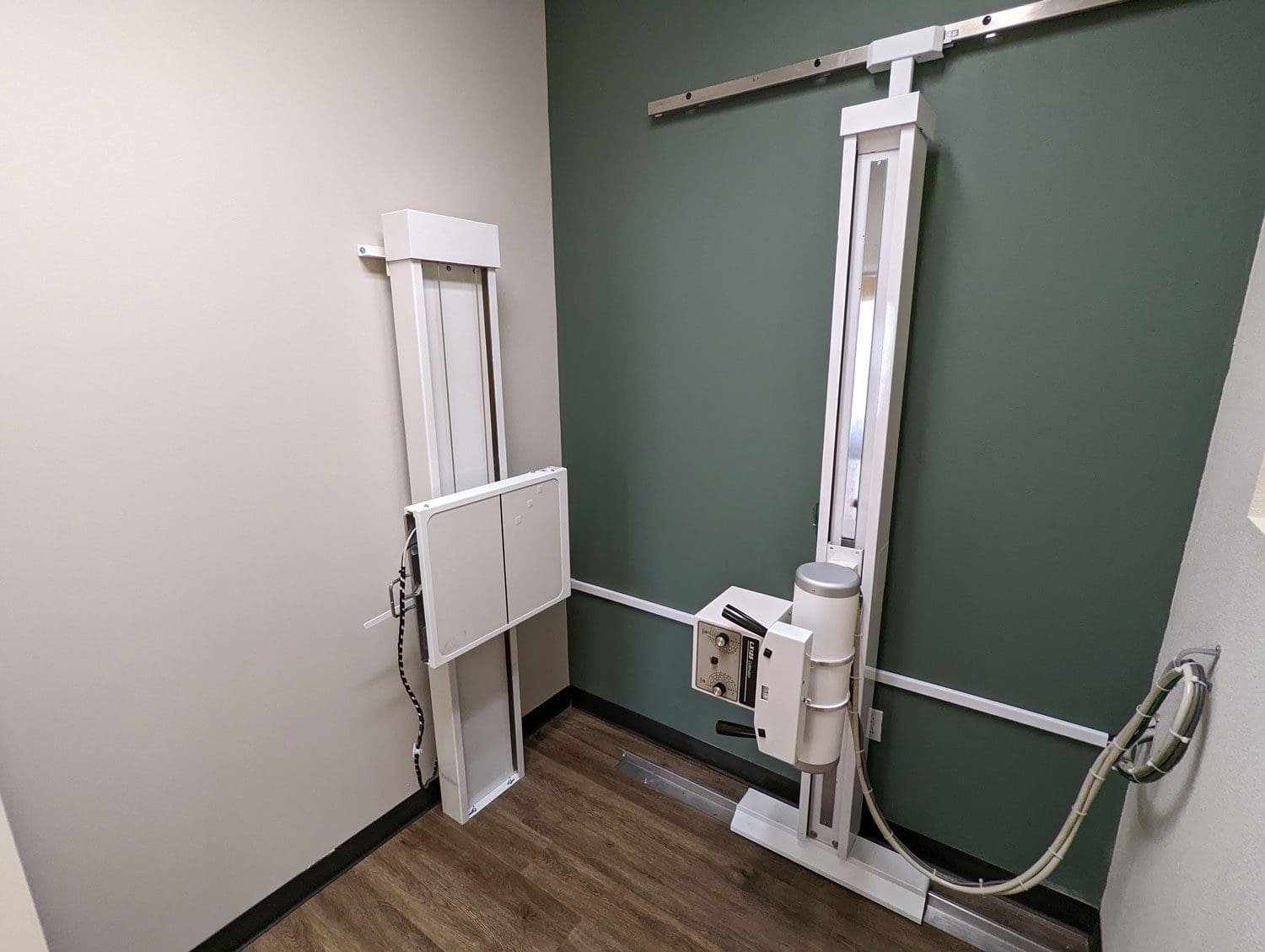Since its discovery in 1895, traditional x-ray services have been used to diagnose many health problems and injuries. Traditional x-rays use electromagnetic radiation with energy that is high enough to pass through the human body. With the use of standard x-ray detectors and an energy source, traditional x-rays produced images with a camera and film.
Though a similar concept, digital x-rays are a bit different. A digital x-ray is similar to a modern digital camera. Though it still uses standard x-ray detectors, radiation, and an energy source, there is no need for expensive film.
Digital x-rays have sensors that are connected to an electronic source and are immediately transmitted to a computer or digital source rather than a film allowing for quicker, clearer, and more accurate images.
During a patient examination, the testing administrator will strategically place you between an energy source and an x-ray detector plate. You may be asked to don a lead gown, apron, or blanket to protect surrounding tissues from radiation exposure — though digital x-rays emit far less radiation than traditional x-rays.
How are digital x-rays used for chiropractic care?
Chiropractors are board-certified medical professionals that specialize in diagnosing, treating, and preventing disorders involving the musculoskeletal system including the bones, cartilage, connective tissue, ligaments, muscles, and tendons. With more than 3 billion x-rays performed worldwide, the advanced technology of digital x-rays allows your chiropractor to quickly assess an area of concern to determine the need for treatment.
A digital x-ray produces clear, concise images of a targeted area where you may be experiencing pain or other symptoms. Unlike traditional x-rays, a digital x-ray can be enhanced or zoomed into without affecting the quality of the image.
When it comes to treating musculoskeletal disorders and injuries – timing is crucial. Rather than waiting for a film to be sent off, developed, and returned to your doctor for evaluation in hopes of having a clear image, a digital x-ray allows immediate, easy-to-see results.
X-rays allow your chiropractor to accurately monitor a spinal deformity to better understand treatment and alignment needs, diagnose underlying problems that cause other conditions, like arthritis or premature degeneration, assess spinal alignment and proper posture, and help to diagnose traumatic injuries that may have been missed by others.



